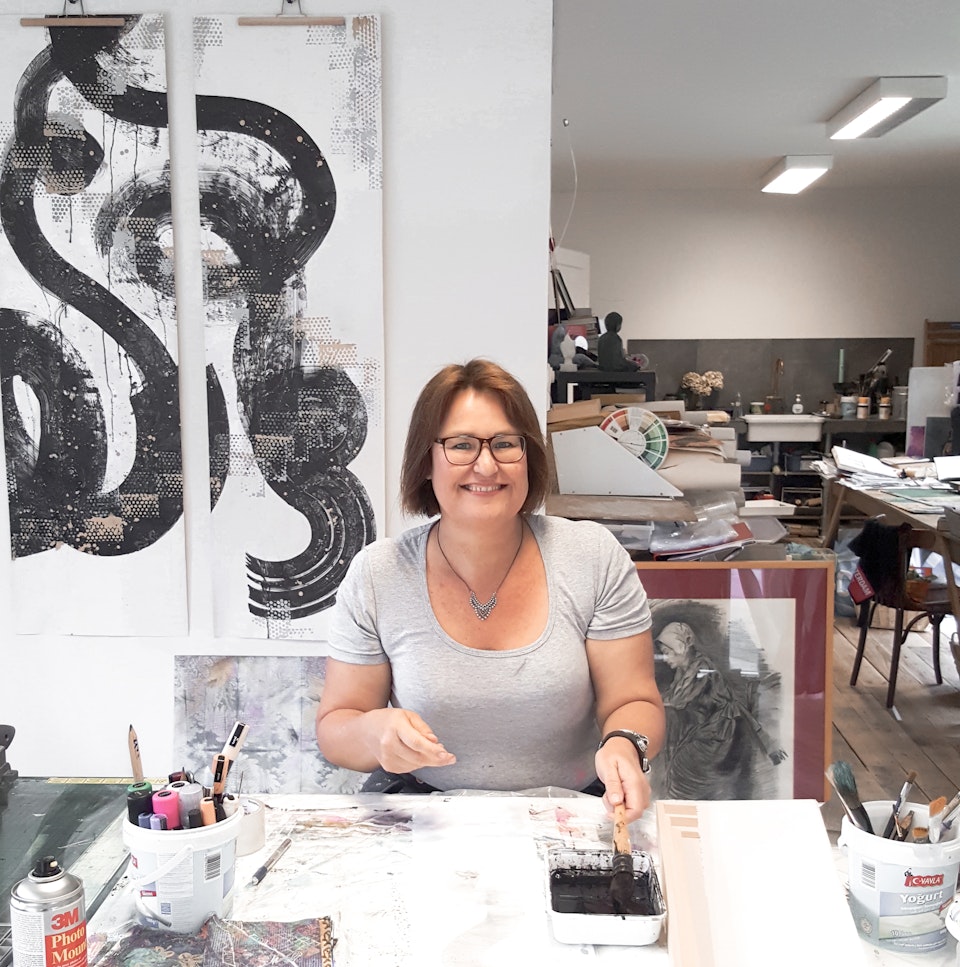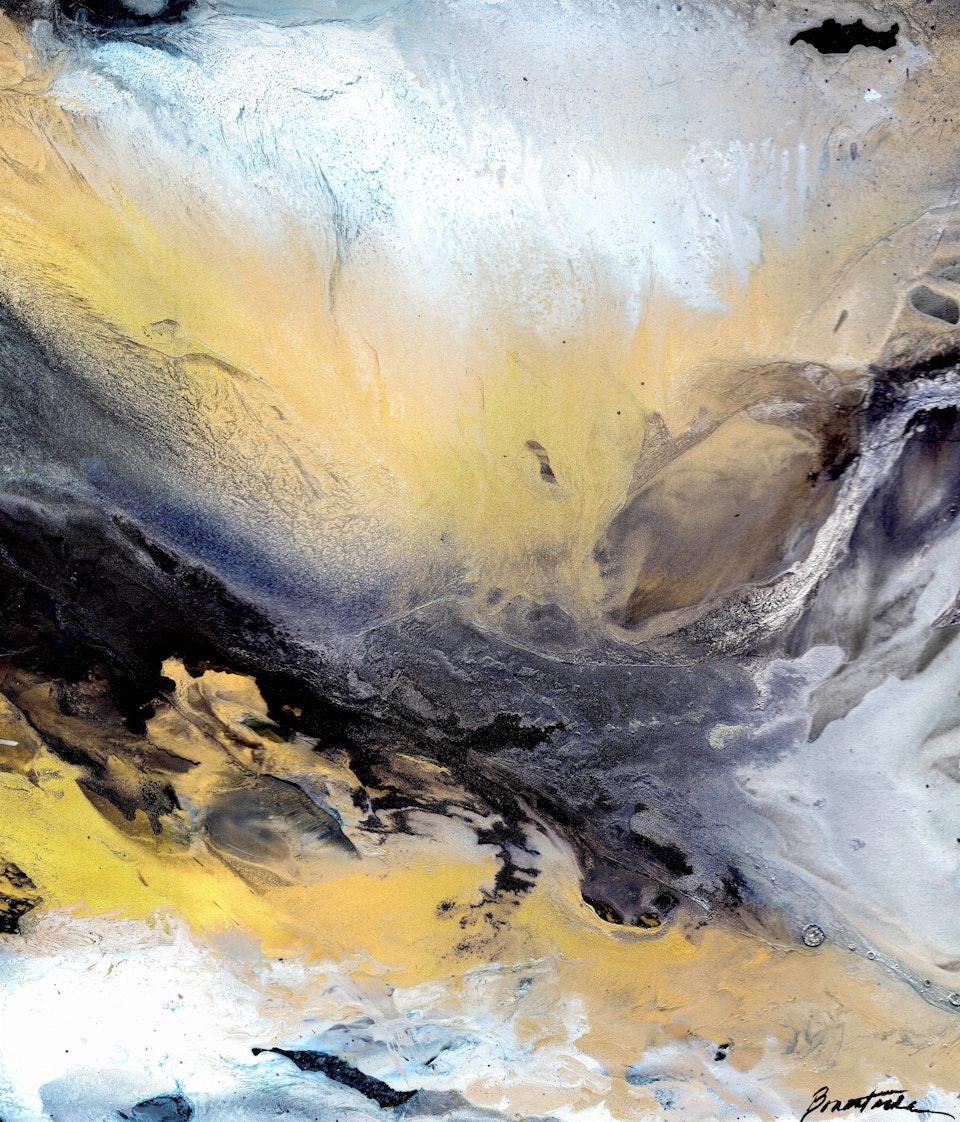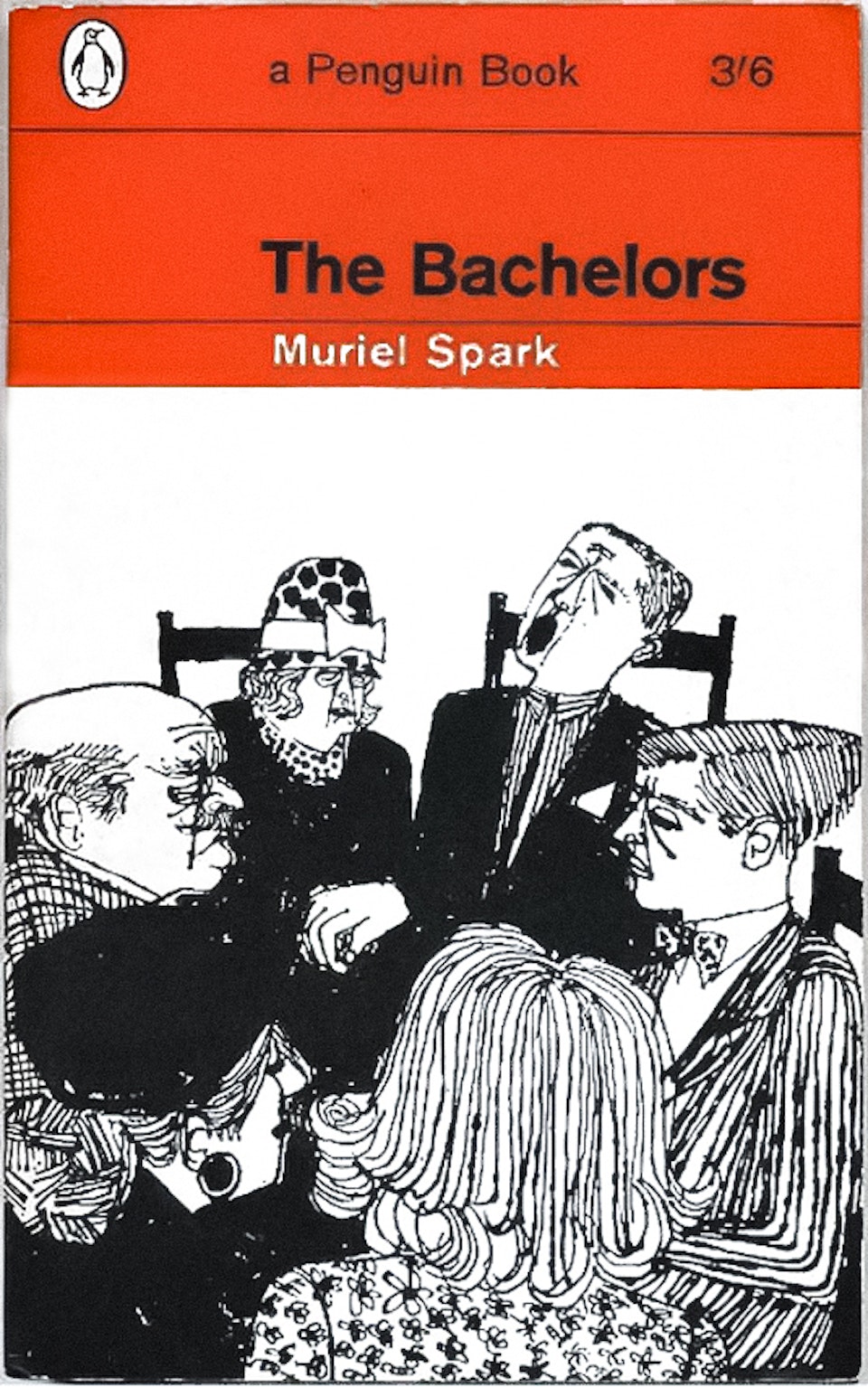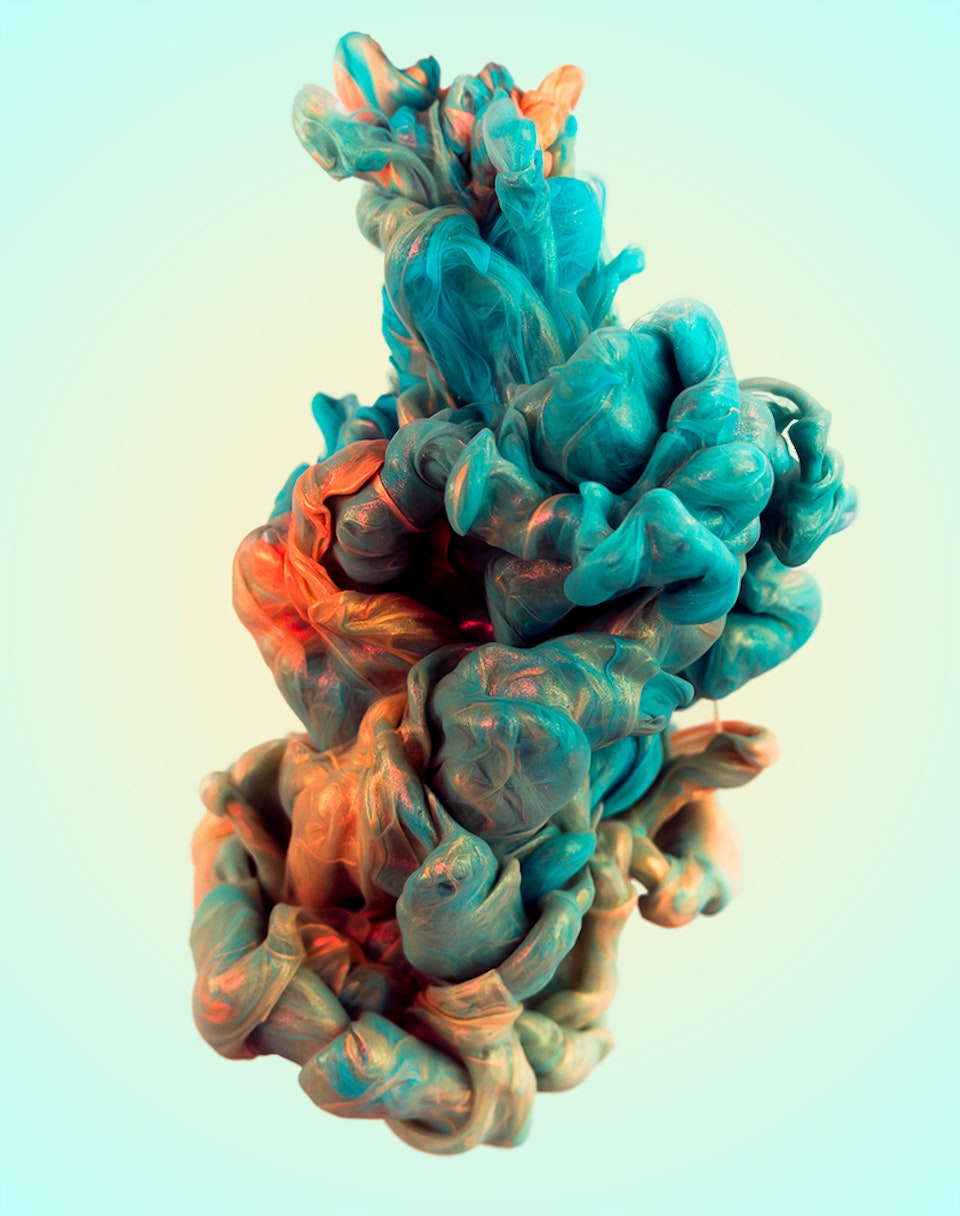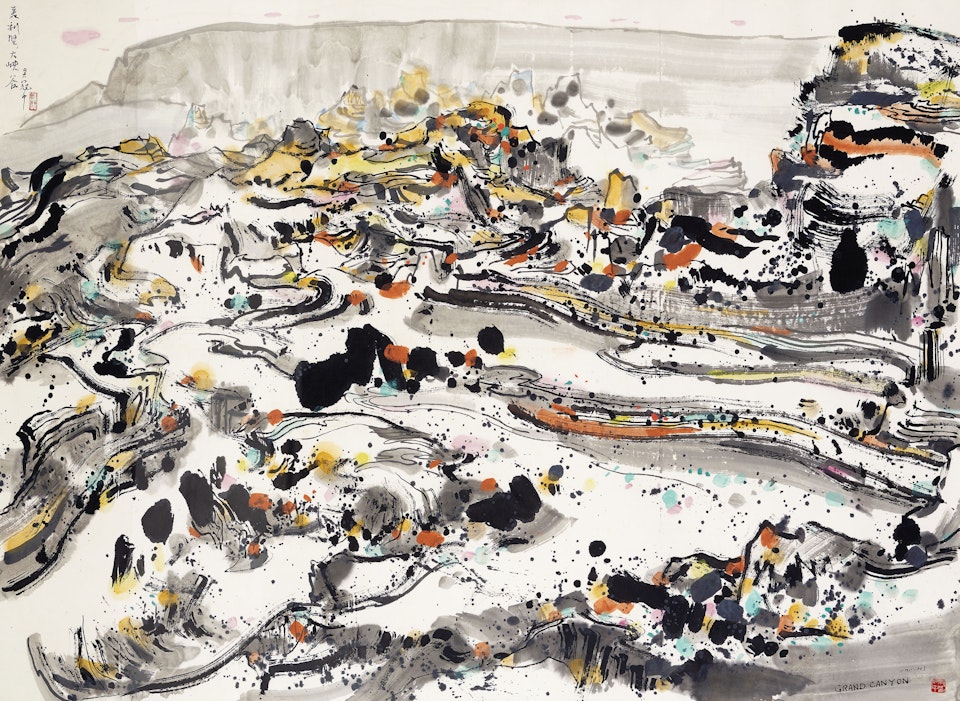November 14, 2019
Ink Art is Becoming More Valuable
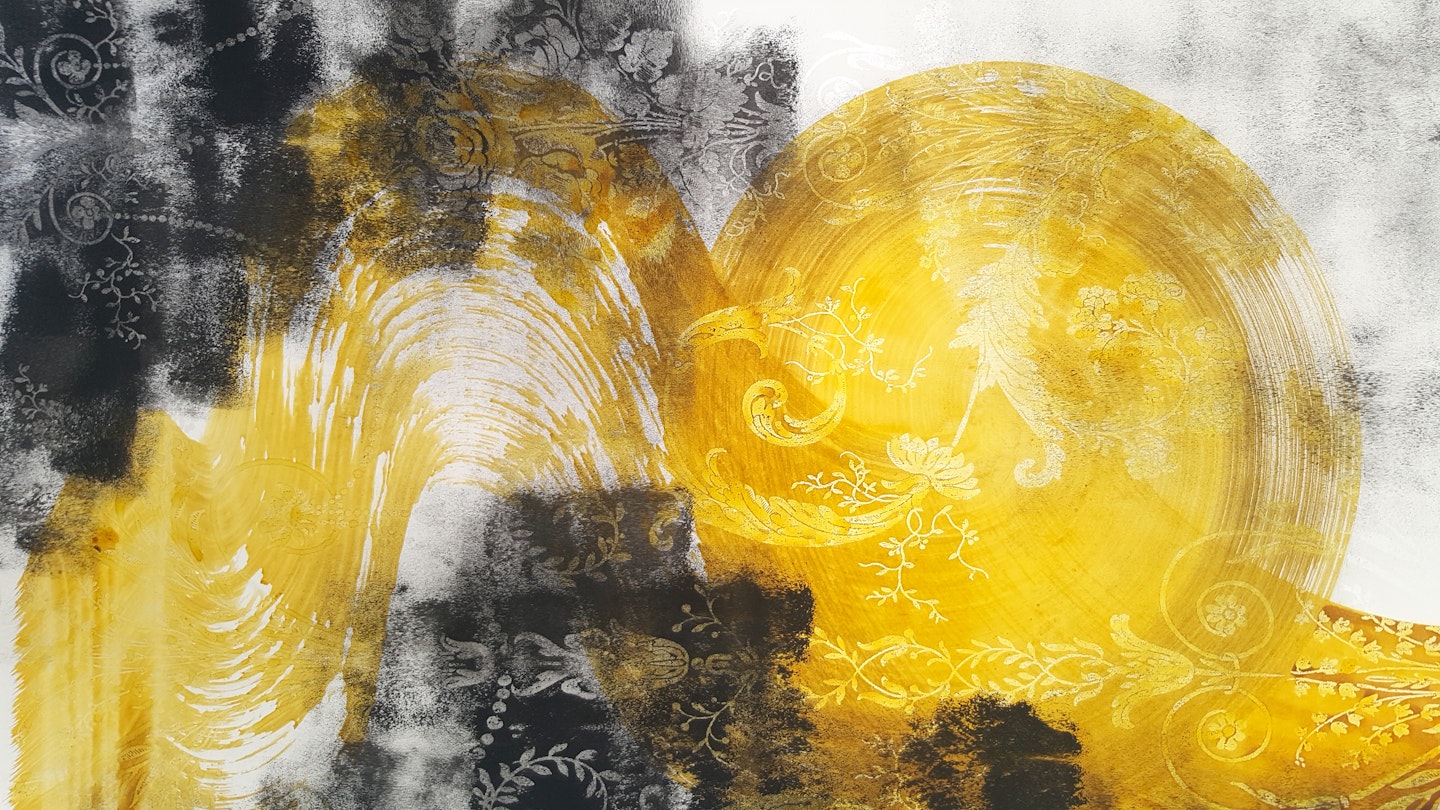
“I’ve been creative all my life as a young child but I’ve never really recognized it because to me, being an artist meant that if you were not as good as a Rembrandt then you’re not really an artist,” laughs abstract painting and collage artist Tessa, who flew in for VAWAA’s “Follow the Rabbit” third annual gathering in New York from The Netherlands.
Her Inspiration to Learn to Paint
For this abstract artist whose large, slender works use large swirling ink brushstrokes, her inspiration lies in travel. She has lived abroad for 17 years and in each place she found a local artist to work with and to learn from.
When she came back to The Netherlands, her instinct was to follow her passion, and so she pursued art school in 2011.
Tessa, a VAWAA artist, in her studio in The Netherlands, loves playing with large ink swirls.
Upon graduation, she started her own arts studio and has been trying to get her art out there. Her art is definitely influenced by the places she’s lived in, including Japan and Turkey, and she has done a lot of work with ink.
Ink swirls with a brush or “the bottom of a broom” are some of the core ways Tessa finds artistic expression. When asked if the patterns are symbolic of anything, she laughs and says that they are pretty abstract.
After changing her technique five to six years ago, she started to play up her big love for patterns which inspired many of the designs in an artistic composition. “Just a single ink swirl that is fantastic or becomes a much more layered look can dictate the course of a painting,” she says.
Metallica Dreams, alcohol ink abstract painting by Alexis Bonavitacola.
Evolution of Ink as a Visual Art
For artists who like to work with ink, there are so many types of ink to choose from, including alcohol ink which can lead to some pretty zany looking abstracts! These are fast-drying and highly pigmented, ideal to use on any surface. They are also waterproof. Many artists use them for their transparency and vibrancy.
As a niche within the creative arts, the value of ink art is growing. In 2017, twelve small ink-brush paintings by Qi Baishi, Twelve Landscape Screens (from 1925), sold in December for $140.8 million (931.5 million yuan) at Poly Beijing, setting a record for a Chinese work of art sold at auction.
Twelve Landscape Screens (1925) by Qi Baishi. Courtesy Daily Art Magazine.
Ink is not a new medium. The pen and ink combination was a popular medium for illustrators, especially those in the book and magazine publishing world (particularly in children’s books).
A pen and ink illustration by Terence Greer.
Of late, ink specialists have started branching out on their own and seeing where their art takes them by fusing traditional techniques with more modern innovations.
The Italian graphic designer Alberto Seveso creates vibrant and wildly colorful photographs by mixing ink before he pours the mixture in water. When you see these photographs--which are powerful enough to command your attention for more than a few minutes-- you start to appreciate the various possibilities of this medium.
An underwater ink and metal photograph by Italian artist, Albert Seveso. Courtesy of thisiscolossal.com.
Chinese artist Wu Guanzhong, widely recognized as one of the most important artists in the 20th century, pushes the boundaries of how traditional medium of ink is used for a new century. But all his innovations only became possible after he had mastered the centuries-old tradition of Chinese ink landscape painting.
The Grand Canyon, ink and color on paper by Wu Guanzhong.
Like ink artists who are pushing the boundaries, Tessa too anchors herself in classical art principles and continuously schools herself. “Two years I decided to give myself a challenge to make smaller patterns for 100 days in a row, and I turned small into postcards,” she says. Her ink is sourced from local stores, and Chinese ink gives her the fluidity and flexibility she needs.
Book a painting apprenticeship with Tessa
To experience a 5-day mini apprenticeship learn about abstract painting and collage, visit Tessa's VAWAA artist page.
For more stories, tips, and new artist updates, subscribe here.
